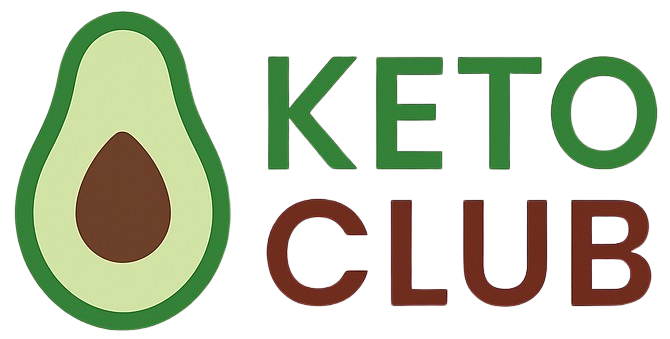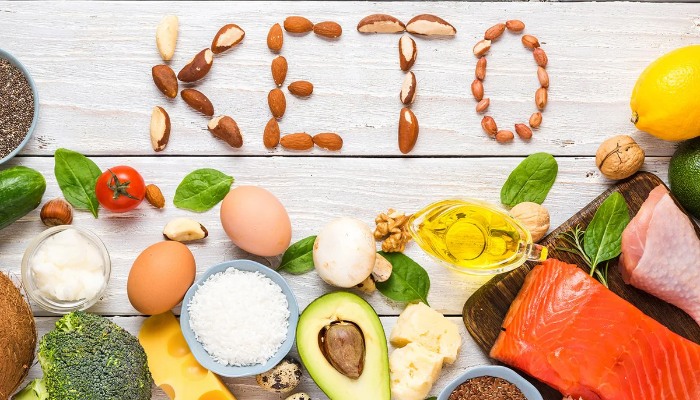The ketogenic diet has surged in popularity over the past decade. With countless success stories and research backing its benefits, many people turn to keto for weight loss, improved energy, mental clarity, and even therapeutic support for certain health conditions. But along with the buzz comes a lot of confusion, misinformation, and myths—some of which keep people from ever trying keto, or worse, doing it incorrectly.
In this article, we’ll break down the most common keto myths, explain the science behind each one, and help you separate fact from fiction so you can follow keto with confidence.
Myth #1: Keto Is Just a Fad Diet
Fact: Keto has been around for over 100 years—and it’s backed by science.
While keto might seem like a trendy weight loss plan, its roots are medical. The ketogenic diet was originally developed in the 1920s to treat epilepsy. It’s still used today for drug-resistant epilepsy in children and is being studied for its potential benefits in conditions like Alzheimer’s, Parkinson’s, type 2 diabetes, and certain cancers.
Unlike many fad diets that are overly restrictive or based on pseudoscience, keto is grounded in a well-understood metabolic process: ketosis, where the body uses fat instead of glucose for fuel.
Myth #2: You Can Eat Unlimited Bacon, Cheese, and Butter on Keto
Fact: Quality and balance still matter—even on keto.
Yes, keto is high in fat. But that doesn’t mean all fats are created equal or that nutrition goes out the window. Eating greasy fast food and processed meats all day won’t do your health any favors.
A healthy ketogenic diet should emphasize:
- Healthy fats: avocado, olive oil, nuts, seeds, grass-fed butter
- Quality proteins: eggs, poultry, fish, beef
- Low-carb vegetables: leafy greens, broccoli, cauliflower, zucchini
Processed meats and excess dairy can be part of the diet—but they shouldn’t be the foundation. Keto done right is about nourishing your body, not just piling on bacon.
Myth #3: Keto Means Zero Carbs
Fact: Keto is low-carb, not no-carb.
The standard ketogenic diet typically limits you to 20–50g of net carbs per day. That means you can (and should) still eat vegetables, berries, and small portions of other nutrient-rich low-carb foods.
Carbs from sources like spinach, broccoli, cauliflower, avocado, and raspberries provide essential fiber, vitamins, and antioxidants. The key is to focus on low-glycemic, whole-food sources of carbohydrates that won’t spike your blood sugar or kick you out of ketosis.
Myth #4: You’ll Lose Muscle on Keto
Fact: With enough protein and training, you can maintain—or even build—muscle on keto.
The fear of muscle loss often comes from misunderstanding ketosis. When done properly, keto is muscle-sparing. Your body uses ketones for energy and breaks down fat—not muscle—especially if you’re eating adequate protein and engaging in resistance training.
In fact, studies show that keto can support muscle preservation and even growth when combined with strength workouts and sufficient calorie intake. Protein intake on keto usually falls in the range of 0.6–1.0 grams per pound of lean body mass.
Myth #5: Keto Is Bad for Your Heart
Fact: Keto can improve heart health markers—when done correctly.
Many people fear that eating more fat will raise cholesterol and increase heart disease risk. But the reality is more nuanced. Keto often:
- Reduces triglycerides
- Increases HDL (“good” cholesterol)
- Improves insulin sensitivity and blood sugar control
- May lower inflammation
While LDL (“bad” cholesterol) may rise for some, it’s important to look at LDL particle size and pattern, not just total cholesterol.
Choosing unsaturated fats like those in olive oil, avocados, and fatty fish helps keep the keto diet heart-healthy. Avoiding trans fats and highly processed oils is also essential.
Myth #6: You’ll Feel Terrible on Keto (Keto Flu)
Fact: Keto flu is temporary—and preventable.
It’s true that many people feel sluggish, irritable, or headachy during the first few days of keto. This is often called the “keto flu”, and it’s caused by your body adapting to using fat instead of carbs for fuel. It can also be due to electrolyte imbalances (sodium, potassium, magnesium) as the body sheds water and minerals.
How to prevent keto flu:
- Drink plenty of water
- Add salt to your food
- Consider an electrolyte supplement
- Eat enough fat and calories
Most people feel better within 3–5 days and often report improved energy, mood, and focus after adjusting.
Myth #7: Keto Isn’t Sustainable Long-Term
Fact: Many people follow keto for years—and thrive.
Sustainability depends on the individual. If you love carb-heavy meals and dislike fatty foods, keto might feel restrictive. But for many people, keto becomes a lifestyle rather than a short-term diet.
Why keto is sustainable for some:
- Reduces hunger and cravings
- Stabilizes energy levels
- Encourages whole-food eating
- Simplifies meal planning and decision fatigue
That said, you don’t have to follow keto strictly forever. Some adopt cyclical keto (periodic carb refeeding), targeted keto (carbs around workouts), or low-carb/high-fat variations that maintain many benefits while adding flexibility.
Myth #8: Keto Is Just for Weight Loss
Fact: Keto offers benefits far beyond weight loss.
While weight loss is a common reason people start keto, the benefits don’t stop at the scale. Keto has been linked to:
- Better blood sugar and insulin control (helpful for type 2 diabetes)
- Mental clarity and reduced brain fog
- More stable moods and fewer energy crashes
- Improved triglyceride and HDL levels
- Reduced inflammation
- Epilepsy and neurological disorder management
- Potential cancer therapy (in early research)
For some people, keto isn’t a weight-loss plan—it’s a health strategy.
Myth #9: You Can’t Eat Fruits or Vegetables on Keto
Fact: You can—and should—eat lots of non-starchy vegetables and select fruits.
Keto doesn’t mean zero produce. Vegetables are rich in fiber, vitamins, minerals, and antioxidants. You just need to focus on low-carb options.
Keto-Friendly Veggies:
- Spinach
- Kale
- Broccoli
- Cauliflower
- Zucchini
- Asparagus
- Cabbage
- Mushrooms
Low-Sugar Fruits:
- Raspberries
- Blackberries
- Strawberries
- Lemons/limes
- Avocados (yes, they’re fruit!)
Avoid high-sugar fruits like bananas, mangoes, grapes, and apples if you want to stay in ketosis.
Myth #10: Keto Causes Nutrient Deficiencies
Fact: A well-planned keto diet can be incredibly nutrient-dense.
Yes, if you eat nothing but cheese and bacon, you may miss out on key nutrients. But a balanced keto diet that includes leafy greens, nuts, seeds, eggs, seafood, and healthy oils can provide:
- Vitamins A, D, E, and K
- B vitamins
- Magnesium, potassium, and sodium
- Omega-3 fatty acids
In some cases, supplementation with magnesium, electrolytes, or vitamin D may help—just like with any diet.
Final Thoughts
Keto has its critics, but many of the objections are based on myths, misunderstandings, or poor implementation. When done right, the ketogenic diet can be a powerful tool for fat loss, metabolic health, mental clarity, and more.
It’s not magic—it’s metabolic science. And it’s not about bacon overload—it’s about balance, quality, and consistency.
Whether you’re considering keto for the first time or recommitting to the journey, don’t let myths hold you back. Arm yourself with real knowledge, listen to your body, and make informed choices that work for you.
Key Takeaways:
- Keto is not a fad—it has medical roots and science-backed benefits.
- You can eat vegetables, berries, and even desserts—keto is not about deprivation.
- The diet emphasizes real, whole foods—not just bacon and butter.
- Proper hydration and electrolytes prevent “keto flu.”
- Keto is sustainable when approached with flexibility and mindfulness.
- It supports weight loss, mental clarity, blood sugar control, and more.
Keto isn’t extreme—it’s just different. And with the right approach, it might be exactly what your body needs.


